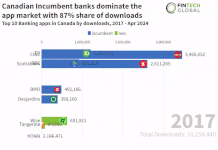Platforms have evolved significantly over the years. Earlier, their main function was limited to the administration of assets. This encompassed the realm of custody, execution, and reporting. However, the definition of a ‘progressive’ platform today has transformed. MorningStar Wealth Platform recently delved deeper into the distinctive features of such platforms.
- Engaging in the advice process Unlike their predecessors, progressive platforms have extended their scope beyond mere asset administration. Not only do they facilitate advice, but they’re also active participants in it. The trend showcases an increased number of DFM powered portfolios and the incorporation of versatile drawdown strategies in pensions. Advisers are continuously searching for platforms that can aid them in their strategic execution. What to look out for: Seek platforms that incorporate tools tailored for advice strategies, such as DFM portfolio management or drawdown.
- Being change catalysts Progressive platforms don’t merely adapt to change; they spearhead it. Platforms built on in-house technology are particularly agile in this respect. Through consistent engagement with advice firms, these platforms gain deep insights into their needs. What to look out for: Examine the platform’s number of integrations with other providers, ensuring true digitisation without manual data transfer methods.
- Holistic journey perspective In an ever-evolving marketplace, progressive platforms are reconceptualising their role. They focus on enhancing the complete user journey, understanding that while the destination is crucial, the journey itself holds immense value. What to look out for: Consider platforms that are involved early in the advice process.
- Clarity in strategy While diverse asset offerings remain crucial, the progressive platforms of today align more with specific advice methodologies. They’re attuned to the needs of their target demographic, focusing on ensuring an optimal experience for them. What to look out for: Enquire about the platform’s strategic direction and its alignment with specific types of advice or execution.
- Focused expertise Today’s platforms are aware of their strengths and weaknesses. Progressive platforms maintain transparency, outlining their areas of proficiency and their improvement roadmap. What to look out for: Discuss the platform’s strengths, areas of improvement, and the sectors they aren’t prioritising.
- Integration into the advice ecosystem The landscape suggests that platforms are bridging the gap between recommendation and execution. Progressive platforms are strategically positioning themselves at this nexus. What to look out for: Examine if the platform offers tools or functionalities that support your intended strategies.
- Prioritising the essentials While innovation remains at the heart of progressive platforms, they also understand the importance of delivering core services efficiently. What to look out for: Investigate areas where platforms are innovating to uplift their customer service.
In conclusion, financial planning operates as an interconnected ecosystem. Platforms must decide their role within this network, be it as a final point or an active participant.
Read the full story here.
Keep up with all the latest FinTech news here
Copyright © 2023 FinTech Global











